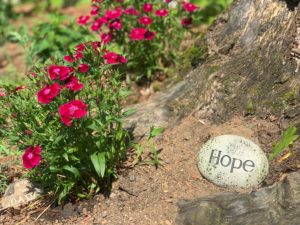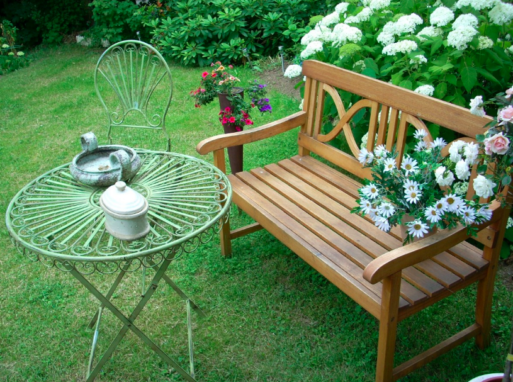Our Tip of the Month
A memory garden is more than a tribute to a loved one who has died. It is a gift to yourself as well. Unlike standing by a gravesite, the time you spend in this outdoor space — usually just steps away from your front or back door — can soothe your sadness. Whether the garden is as small as a single perennial plant or tree, or as large as an oversized flowerbed, a memory garden can — over time — help you heal.
How-To Suggestions
Choose a space that suits your need for privacy. It can be deep in the yard or a corner of your deck. If you can see it from a window or covered porch, you’ll be able to enjoy the view even during bad weather.
Be sure that the location you choose will support the types of plants you want to grow. Sun-loving plants need six to eight hours of sun per day, while shade-lovers need protection from the sun. Research to learn which types of plants grow best in certain locations.
Consider using seasonal plants so that the garden will be in bloom longer. You can include flowers your loved one was partial to or apply another theme to the plantings: favorite colors; soft colors for meditating; plants that have special meanings (like forget-me-nots, rosemary for remembrance, daisies, and lilies for a child, etc.); red, white and blue blooms for a veteran. Roses traditionally commemorate sweethearts and love in a memory garden.
Don’t forget to provide seating. Whether you want to invite others into your garden, or simply want to spend time there alone, use chairs or benches to increase comfort and allow for moments of reflection. Seating will invite people to linger longer.
Scents and sounds can also enhance your memory garden. Herbs such as lavender and basil are wonderfully aromatic. Wind chimes, bells or a fountain will also contribute soothing sounds. You can even place wireless speakers in the area if you want music to be accessible.
Invite wildlife by using bird feeders or a birdbath or sunflowers. Certain flowers will attract butterflies. If you wish to set off the garden, use a ring of small stones or a fence. You can even use personal items of your loved one, such as hiking poles, ski poles, or golf clubs to suggest boundaries. Personal belongings — such as an old watering can — can enhance the space. along with meaningful statuary. These little touches will make the garden feel more secluded and special.
Remember, too, that the memory garden need not be confined to a residence. Workplaces are beginning to initiate these gardens on company property to honor employees or others who have died. Providing these types of offerings shows a sense of respect for those who have died and to those who have lost them. Memory gardens can also allow staff members the opportunity to connect with each other or simply have a beautiful place to visit on their own. (You’ll find special considerations for a workplace memory garden here.)
A grief support group might also find planting a memory garden therapeutic on the premises where the meetings are held.

 Our Monthly Tip: Create a Memory Garden
Our Monthly Tip: Create a Memory Garden



 How Dare You Die Now!
How Dare You Die Now!
 Debating Medical Aid in Dying
Debating Medical Aid in Dying
 “Help Me, Helen”
“Help Me, Helen”














